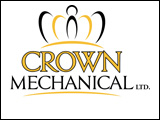Dennis Hiebert (a sociology professor at Providence University College) calls for “necessarily nuanced discussion” about the value of human life in his letter “What does ‘life is sacred’ mean?” (The Carillon, May 7, 2020). Dr. Hiebert raises many questions and addresses, among other things, the beginning of human life. I would like to provide a nuanced discussion of Dr. Hiebert’s claims about that topic.
I have two concerns: (1) Dr. Hiebert seems unaware of the current controversy about when human personhood begins, and (2) Dr. Hiebert glosses over an important distinction between zygotes and blood (and other) cells.
Concern 1
Hiebert writes the following: “The single cell zygote is indeed a potentially self-sustaining human body, though it is still far from the experiential, creative, and higher order capacities that emerge developmentally into personhood.”
Yes, the single cell zygote (i.e., the newly formed cell that marks the beginning of a human being when the sperm and egg unite) is a potentially self-sustaining human body, if all goes well (i.e., if it is not aborted naturally or by an abortionist, and if a life-nourishing environment is maintained). So far, so good.
But Dr. Hiebert fails to acknowledge the current controversy concerning personhood when he claims that the zygote “is still far from the experiential, creative, and higher order capacities that emerge developmentally into personhood.” It turns out that many thoughtful people would argue that the claim Hiebert sets out is false.
Very apparently – contrary to what Hiebert asserts – the experiential, creative, and higher order capacities exist at the get-go in the zygote, and they constitute personhood at the get-go in the zygote.
Very apparently, these capacities do not “emerge,” as Hiebert holds. Rather, these capacities seem very much to be there at the onset, when the zygote is created by the fusion of the sperm and egg. The capacities seem very much to be part of the zygote’s inherent nature, its being. In later development those capacities are expressed or exercised. A person exists at the beginning and, over time, blossoms.
The highly-respected (and philosophically astute) sociologist Christian Smith sets out this view in his book What Is A Person?.
Smith writes: “Persons are not subsequent products of purely physical processes, the final outcomes of a temporal series of events governed by other agents at the end of which persons emerge. To the contrary, ontologically [i.e., in reality], personhood adheres in the human from the start – even if in only the most nascent, densely compacted form possible – acting as the causal agent of its own development.”
Smith adds: “personhood adheres in each human from the start with everything needed to develop and unfold itself – in nourishing environments, of course – through natural processes of becoming. Persons do not emerge out of capacities and bodies at some chronologically delayed time, only after some crucial development has taken place. Persons exist at the start of life [i.e., at the zygote stage] and are their own agents of development and emergent being across their entire life course.”
So, Dr. Hiebert’s claim is not as settled as he seems to think. The human zygote very apparently doesn’t emerge developmentally into personhood but already is a person, or so thoughtful people argue. A nuanced discussion should acknowledge this.
Note: For further nuanced discussion on this topic, I recommend Robert P. George and Christopher Tollefsen’s academic book Embryo: A Defense of Life, and Justina Van Manen’s popular-level book Stuck: A Complete Guide to Answering Tough Questions about Abortion.
Concern 2
Dr. Hiebert also writes: “But assuming independent personhood is realized, what about the blood its body may shed in lacerations, surrender to medical tests, or donate to other bodies? Like the zygote, a blood cell is also human life, one which we handle rather freely. So is it only human cells and organs which are or have the potential to be self-sustaining and independent that are sacred? But no cells actually are, by themselves.”
Here Dr. Hiebert glosses over an important distinction between zygotes and other cells, such as blood cells. In an important sense, it’s not the case that a blood cell is also human life like the zygote. Some qualification (nuance) is needed.
Blood cells and zygotes may be “human life” in some broad generic sense, but they are also different – and this difference is hugely significant for the discussion Hiebert wishes to advance.
Here’s the rub: Blood cells are not human beings whereas zygotes are human beings. To say the zygote is a human being is to say it is a genetically distinct, self-governing living organism/entity that is a distinct individual member of the human species. This is not true of blood cells.
That the zygote is a human being is not just my opinion. Contemporary science – embryology, fetology, and biology – tells us that the human zygote is in fact a human being. For substantiation, see Samuel B. Condic and Maureen L. Condic’s book, Human Embryos, Human Beings, A Scientific and Philosophical Approach .
The human zygote, unlike a human blood cell or organ, is a developmental stage of human being – it’s the first stage. Unlike other human cells and organs, the zygote (the single cell embryo) is a human being that becomes the subsequent stages of human life: multi-celled embryo, fetus, infant, toddler, teenager, and adult (if no interference or malfunction occurs, and if a life-nourishing environment is in place).
Permit me to add further clarification. The zygote is not a potential human being, rather it’s a human being with potential (a potential human being is the sperm and egg before union). Nor is the zygote a mere part of a human being; it is itself a human being – a new and distinct human being. Blood cells may be a part of a human being, but they are not human beings per se. Nor are blood cells human beings with potential.
In other words, blood cells and single cell zygotes are significantly different substances with significantly different properties. They are significantly different in terms of material composition and physical behavior. That’s why blood donation clinics and fertility clinics are different.
It’s true that no cells are self-sustaining and independent – Hiebert is right about this. But whether a cell (or organ) has the “potential to be self-sustaining and independent” is not relevant to the discussion at hand. It’s a red herring. Surely what is morally significant or “sacred” (or at least philosophically interesting) about the human zygote is that it is a human being, not that it might be self-sustaining and independent.
In an important sense, then, it’s not the case that a blood cell is also like the zygote. In fact, a blood cell is very much unlike the zygote. The zygote is an individual human life – a new distinct human being, a new living member of the human species – whereas a blood cell is not. This is biology 101. And it’s important to be clear about this.
Conclusion
Dr. Hiebert says he believes human life is sacred and he calls for a necessarily nuanced discussion. Achieving clarity on the controversy concerning the beginning of human personhood and clarity about the distinction between zygotes and blood (and other) cells should be an important part of that discussion.
I hope what I’ve written is helpful.
Hendrik van der Breggen, PhD, is a retired philosophy professor who lives in Steinbach, Manitoba.



